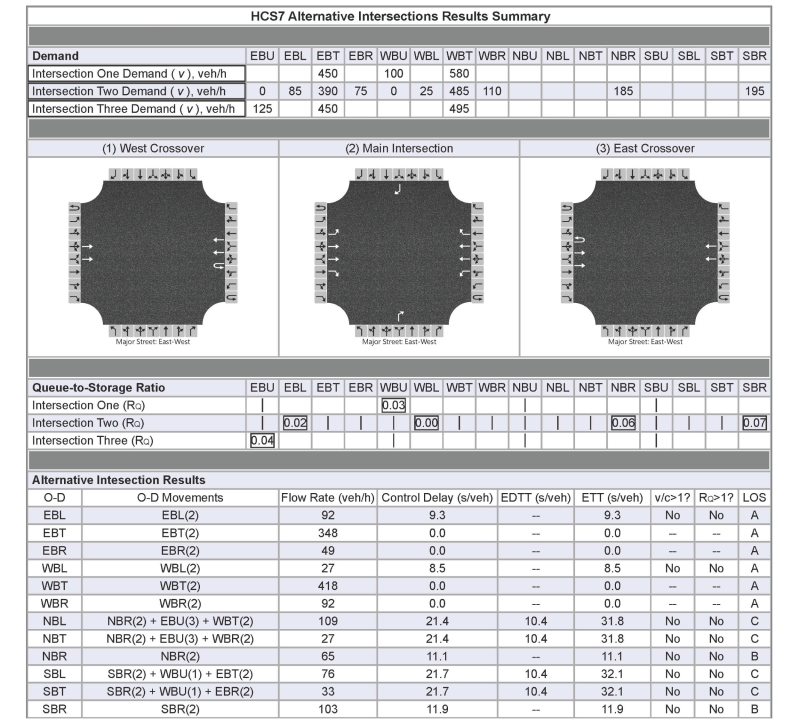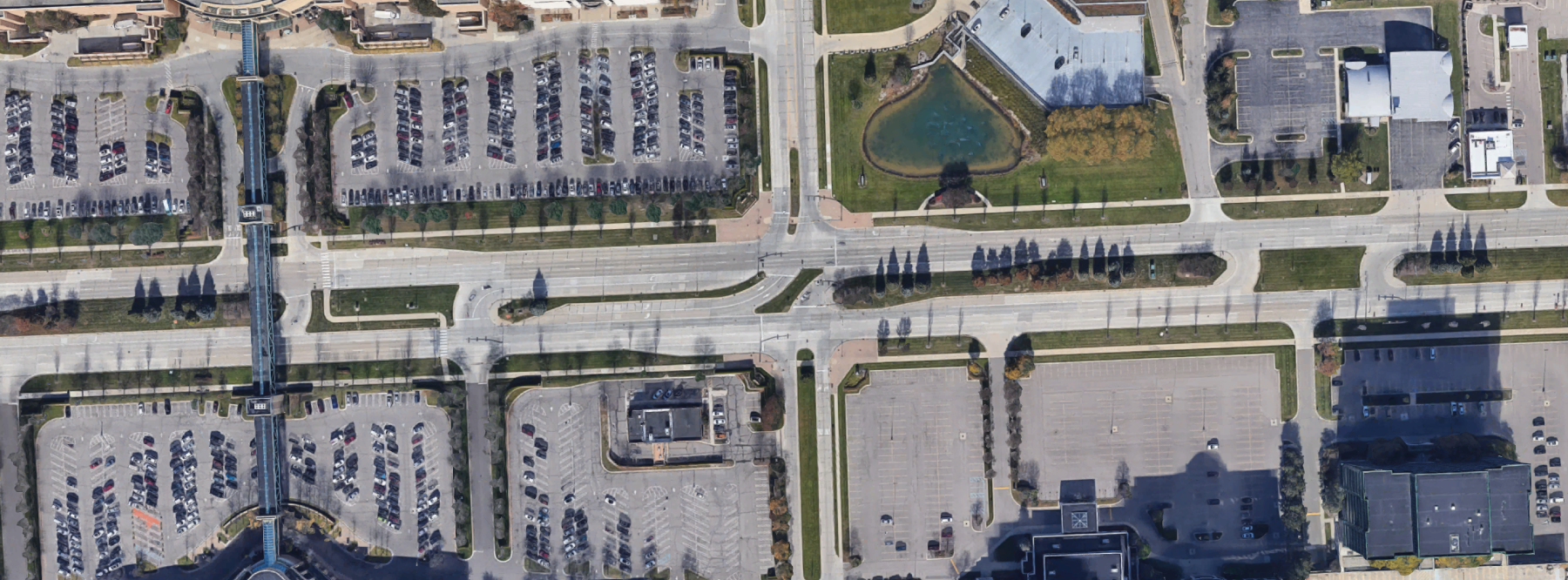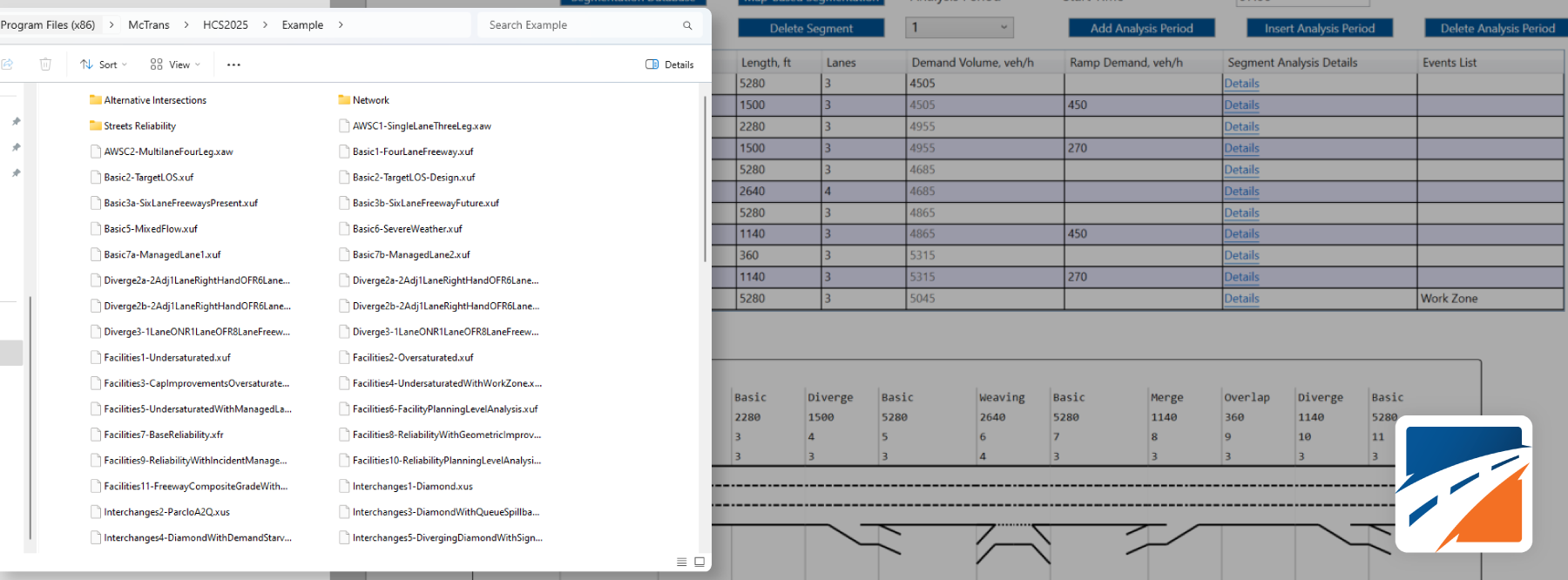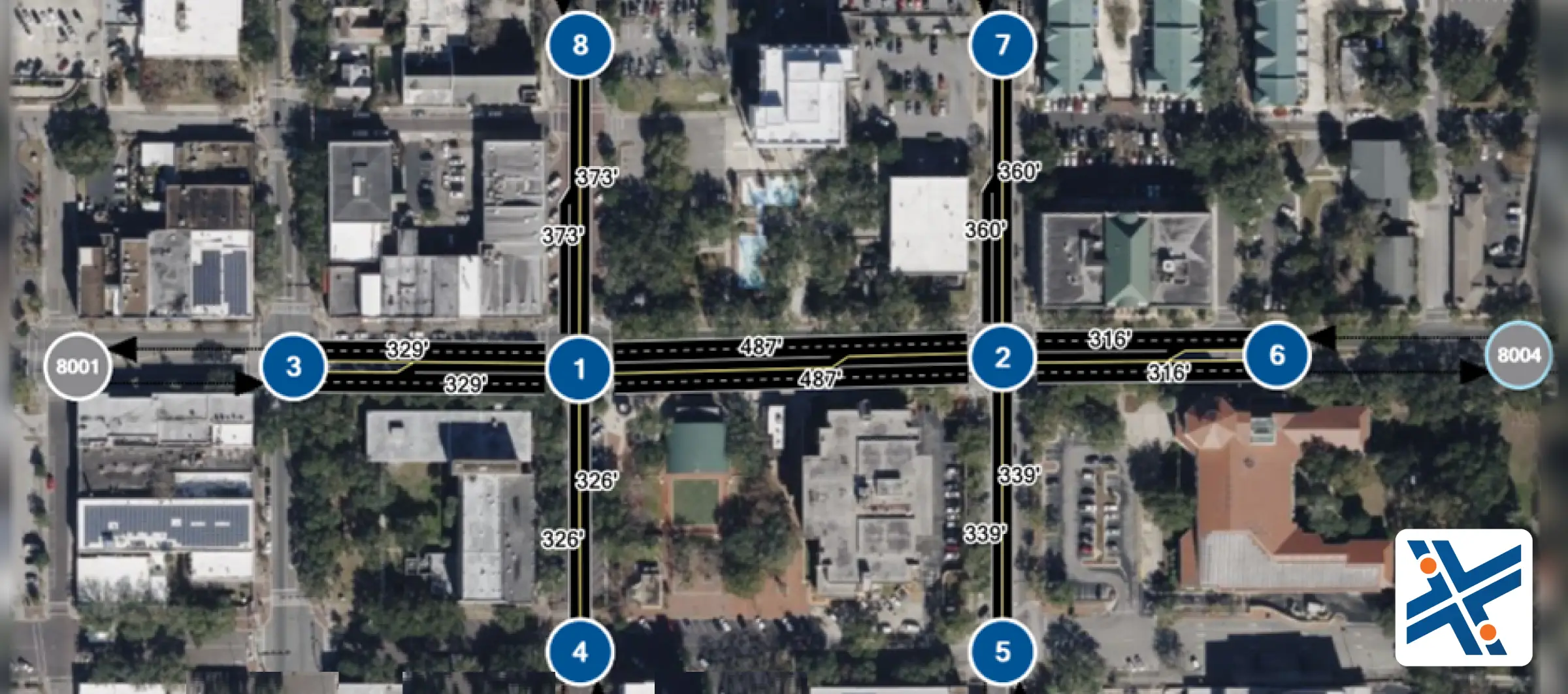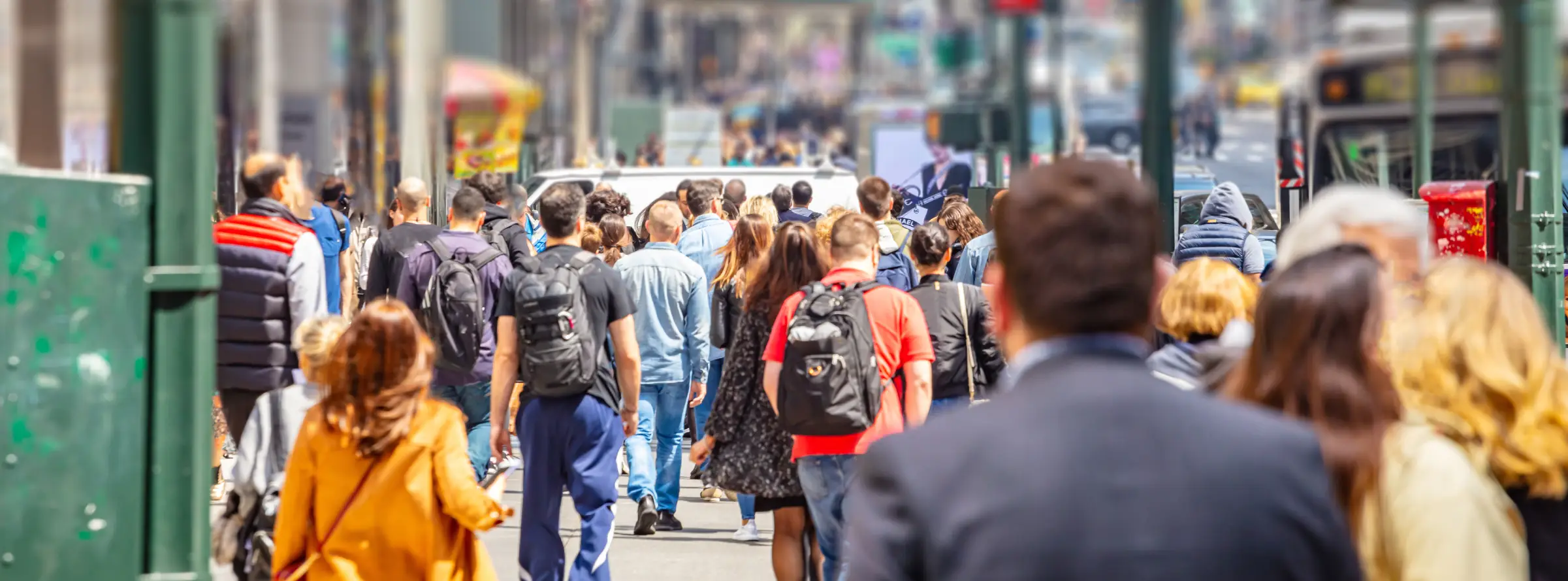The Restricted Crossing U-Turn (RCUT), or “Superstreet,” is a type of Alternative Intersection covered by the HCM methods. It works by prohibiting left-turn and through movements from the minor street. Therefore, drivers who want to perform these movements are required to perform a right-turn at the central intersection, followed by a U-turn in the adjacent crossover so they can proceed to their desired destination.

Diverted movements from the Northbound minor street approach (Source: Georgia Department of Transportation)
RCUT intersections can have both unsignalized or signalized operations, and both can be handled by HCS. This article will illustrate the application of the HCM methods to analyze a stop-controlled RCUT, which is handled by the Two-Way Stop Controlled (TWSC) module in HCS.
For this example, the major street is in the East-West direction; therefore, movements in the Northbound and Southbound approaches in the central intersection are diverted to an adjacent crossover. The following figure illustrates the intersection geometry and its traffic demands:
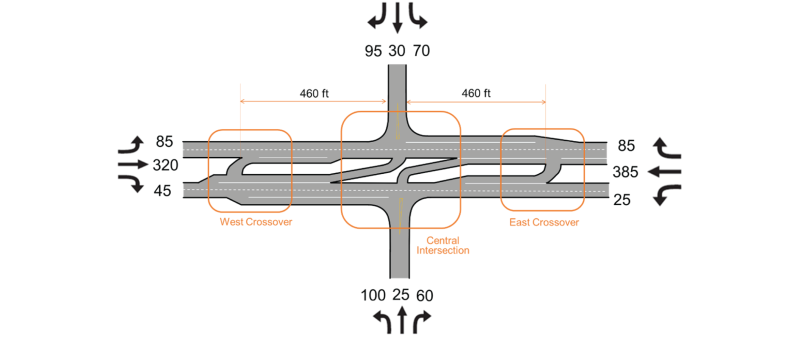
Sample RCUT geometry with turning movement demands
The first step in the analysis is to convert the original demand in the RCUT to specific movements at the central intersection and crossovers, as shown in the figure.

RCUT demands for the central intersection and crossovers
The NB approach can be used to illustrate this process: the actual demand shown in the previous figure is 100 veh/h (Left) + 25 veh/h (Through) + 60 veh/h (Right). The total demand of 185 veh/h is then assigned to the right-turn movement, which is the only permitted movement in the NB approach. Next, the total diverted demand in the NB approach (100veh/h for left and 25 veh/h for through) is assigned to the U-turn maneuver in the East Crossover. This process is then repeated for all movements in the intersection.
Next, the RCUT can be modeled with HCS using the following steps:
- Create a TWSC file for the Central Intersection
- “General” page: check the “RCUT Alternative Intersection” box and select the intersection type “RCUT with Stop Signs”
- “Traffic” page: provide converted demands for the central intersection
- “RCUT” page: provide actual demands for the intersection and required geometry inputs, such as storage lengths and distance from the main intersection to crossovers (460 ft)
- Create one TWSC file for each crossover
- “General” page: check the “MUT/RCUT Crossover Intersection” box
- “Traffic”: provide converted demands for the crossover
- Save and close the file
- Go back to the Central Intersection file and under the “RCUT” page, import the TWSC files for each crossover
After all required inputs are provided, the performance measures for every O-D pair (Experienced Travel Time, per HCM Chapter 23) will be provided in the HCS Report as shown:
